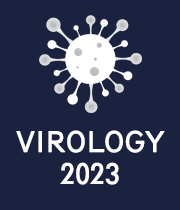Virology 2023 Important Update
This is to inform that Virology 2023 event is now merged with Infection 2023 which will be held on same dates June 21-22, 2023 in Rome, Italy and virtually.
For complete details about the merged event, please visit: https://infectiouscongress.com
For further details, please contact us at infectious@magnusconference.com or call + 1 (702) 988 2320
Pediatric and Neonatal Viral Infections
A virus is a small infectious organism—much smaller than a fungus or bacterium—that reproduces by invading a live cell. Virus infections are very common during childhood and adolescence. Clinicians will treat children and adolescents with infections caused by a variety of viral viruses on a frequent basis. These infections appear in a variety of ways. Many infections have clinical manifestations that are particular to the infecting virus but vary depending on the patient's age and immunocompetence. The majority of children who are infected with a viral recover without treatment. Fever and bodily pains or discomfort are common symptoms of viral infections. The majority of viral infections in children cause self-limited sickness that is managed symptomatically, and infected children recover completely.
- Immunization
- Pediatric Viral Infection
- Long-Term Consequences
- Post-Viral Sequelae

